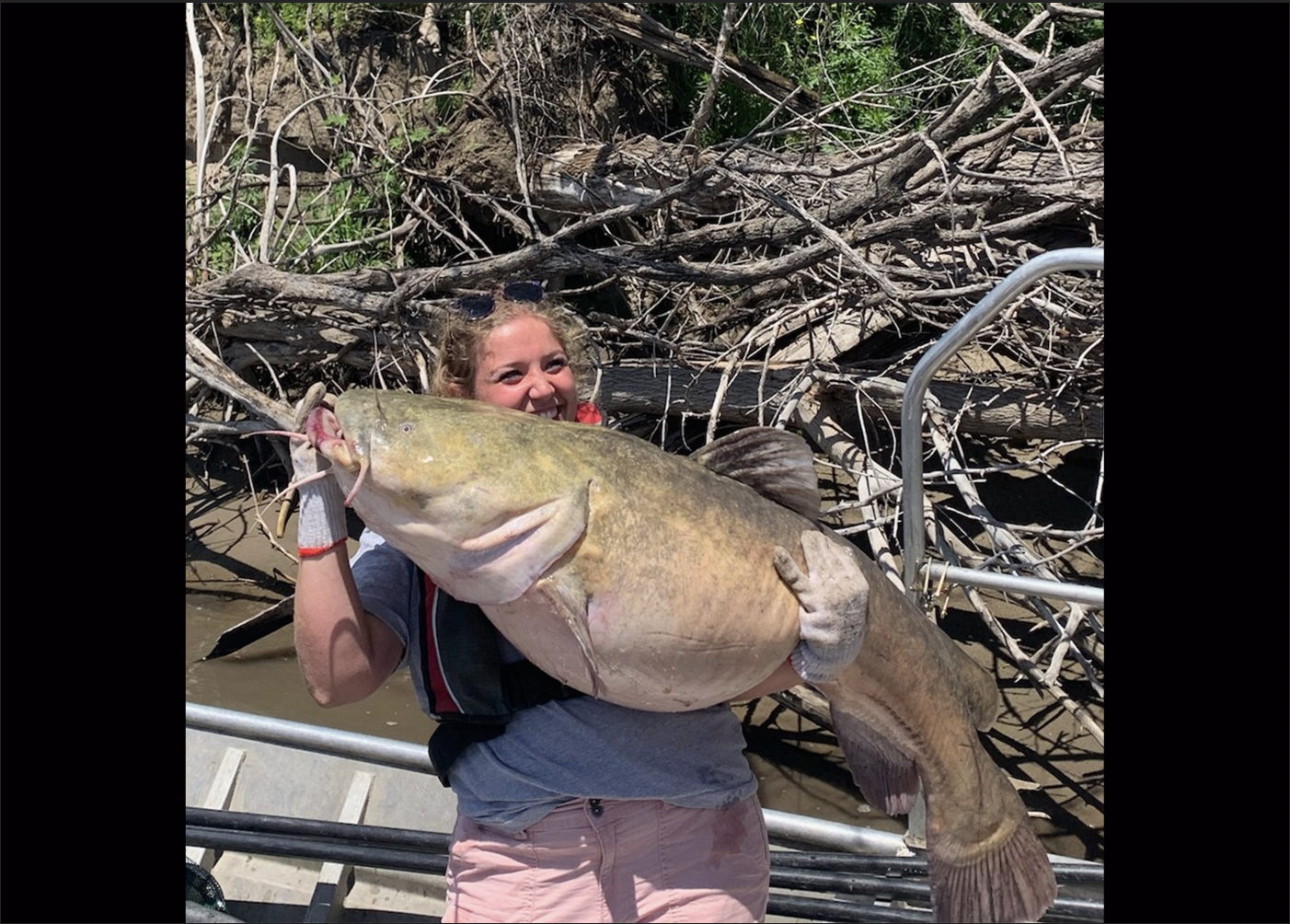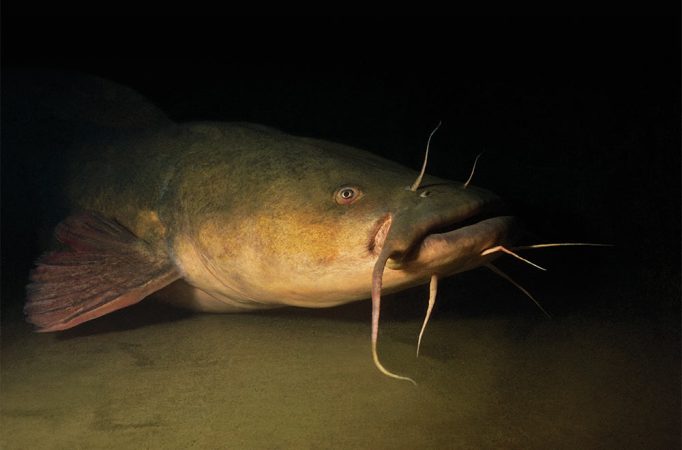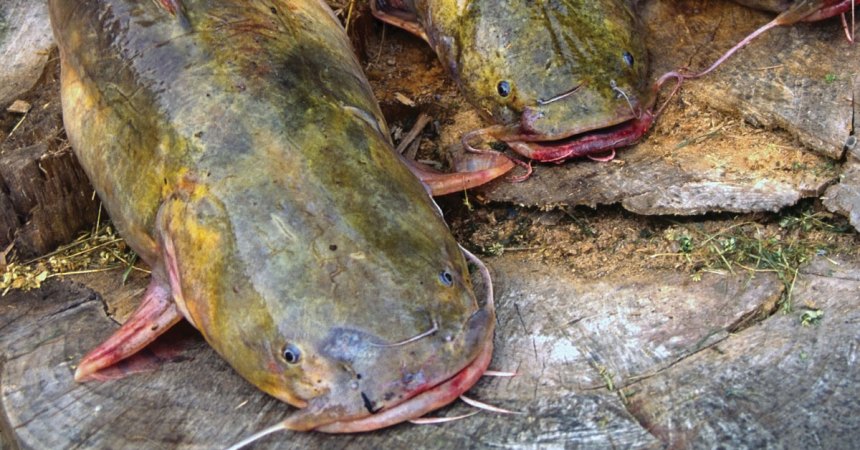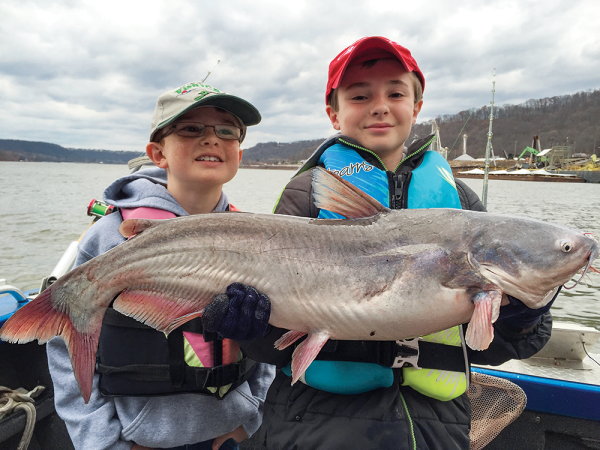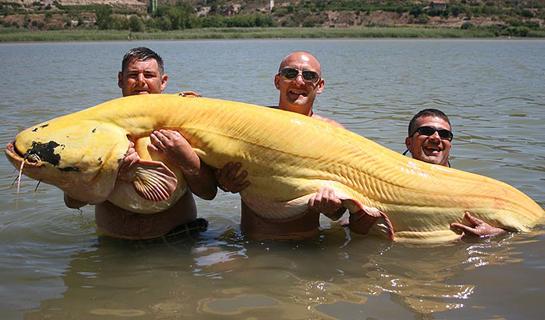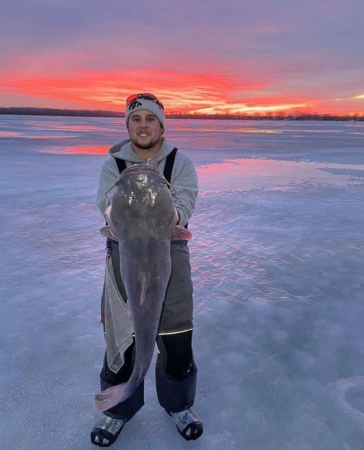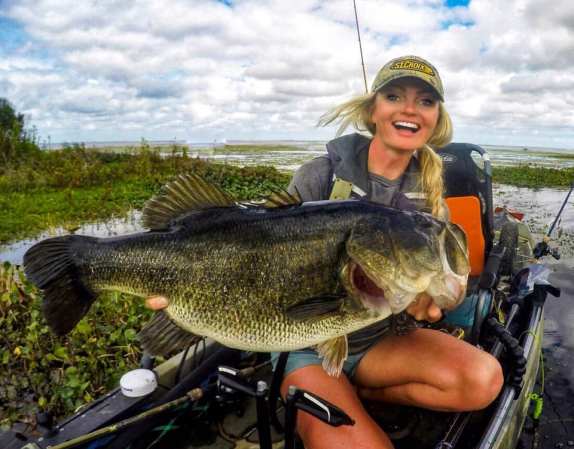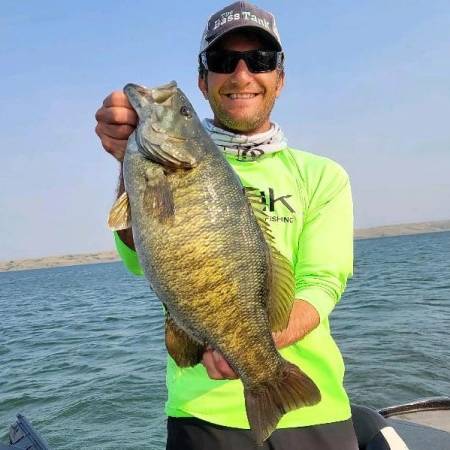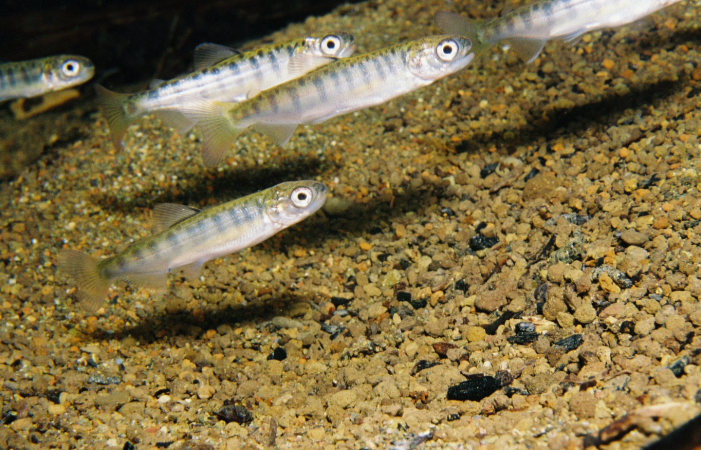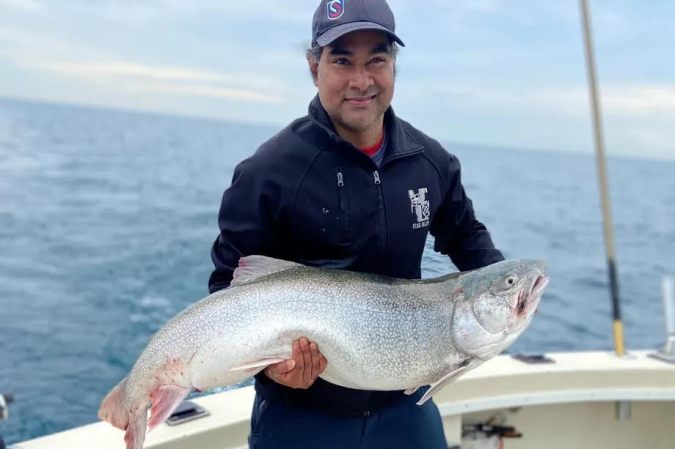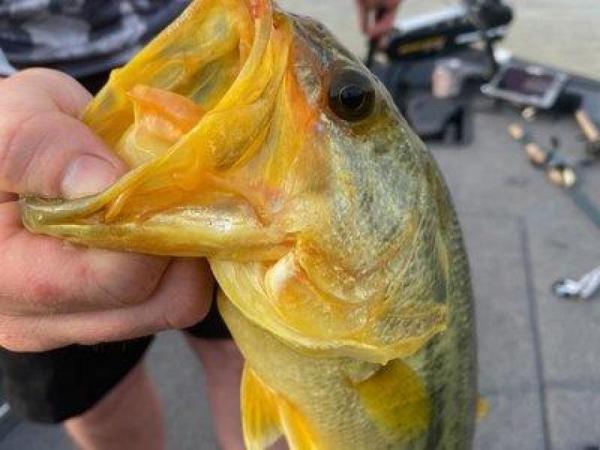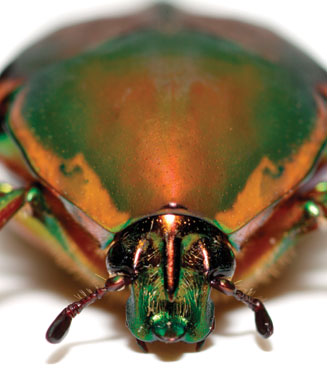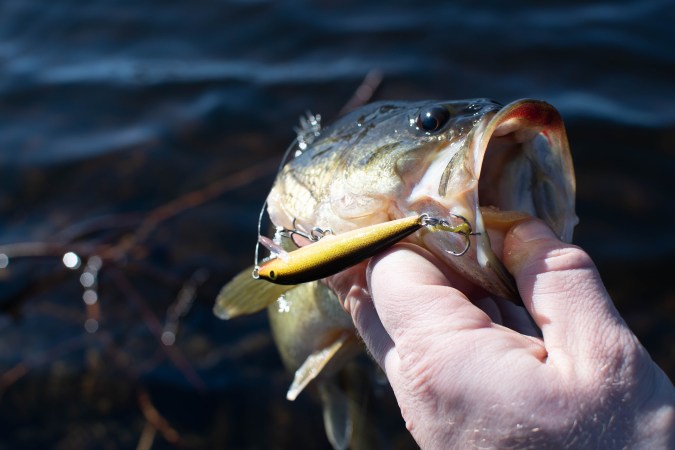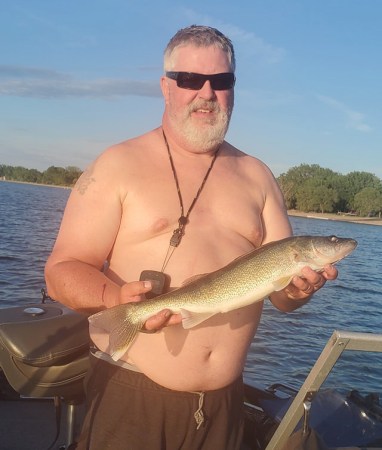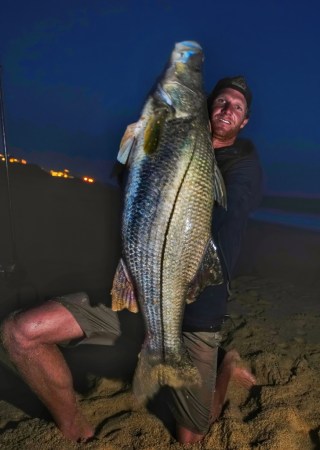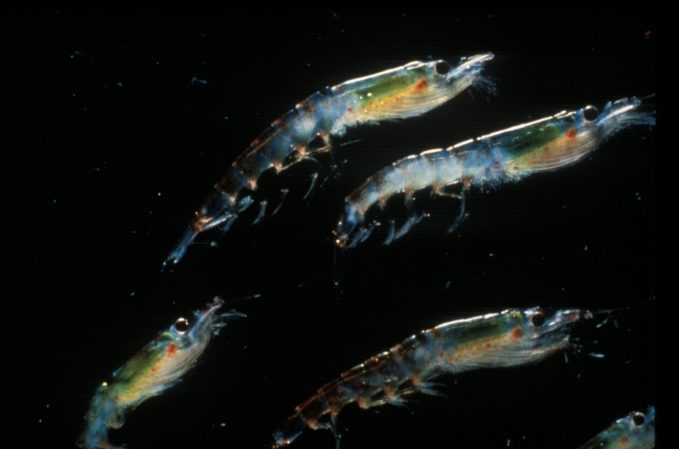Biologists with the Iowa Department of Natural Resources were conducting a fisheries survey on the sprawling Missouri River last week when they reeled up a massive flathead catfish that weighed 72.4 pounds. A post on the DNR’s Facebook page shows a young employee cradling the 49.5-inch catfish, which appears to be a female that’s about ready to spawn. The fish’s belly is so large and swollen with roe that the DNR employee is barely able to wrap her arm around it.
“Flathead catfish are native to Iowa,” the DNR writes in the post. “In June they begin spawning and can be found in surprisingly small streams.”
The post was a teaser for National Catfish Day, which took place on June 25. Designated by President Ronald Reagan in 1987, National Catfish Day was established to recognize the value of farm-raised catfish.
The 70-plus pound catfish that the DNR caught last week didn’t come from a farm pond, though. It’s a wild fish from the wide and deep Missouri River. It wasn’t a record fish, but it was within 10 pounds of the current Iowa state record for the species—an 81-pound, 52-inch flathead that was caught from Lake Ellis by angler Joe Baze in 1958.
The IGFA all-tackle flathead catfish world record came from Elk City Reservoir in Kansas in 1998. That fish weighed 123 pounds.
Flatheads are the second-largest catfish species in the U.S.—second only to blues, which can weigh upwards of 140 pounds. With square heads and distinctive brown and yellow shading on their bodies, they are easy to identify. They’re also an excellent food fish, and some anglers prefer flatheads to channels and blues because flatheads primarily eat live fish. This means that anglers fishing with live shad or bream tend to catch more flatheads than those using dough balls and stink baits. The Missouri River is a haven for all three species, however, and catfish anglers can have success there fishing the deeper pools with all the usual baits.

